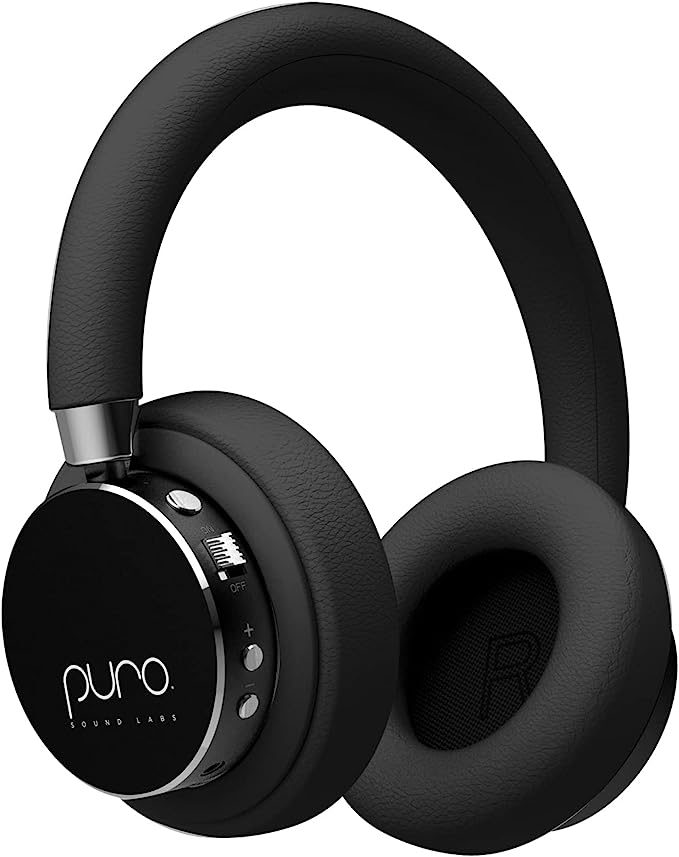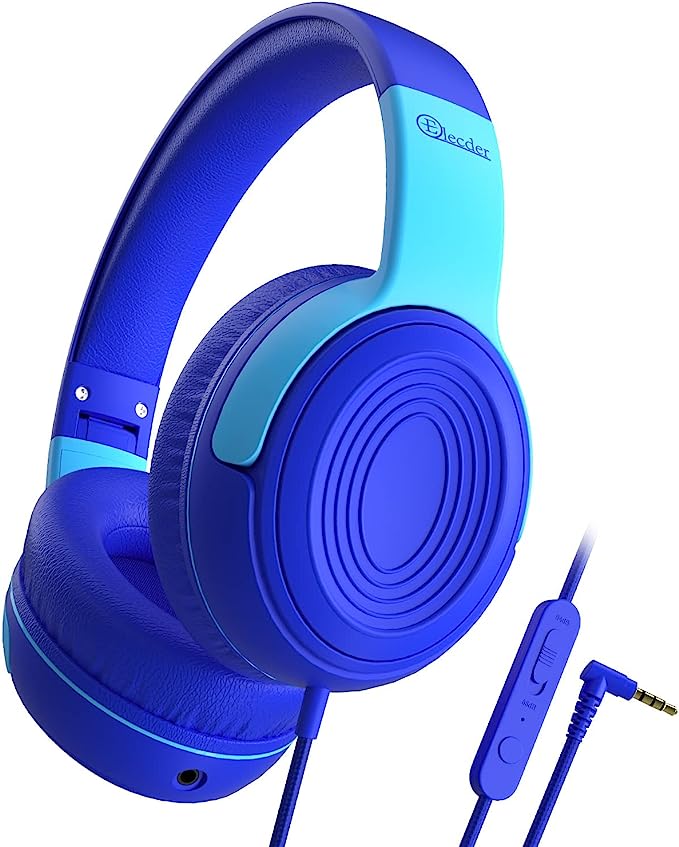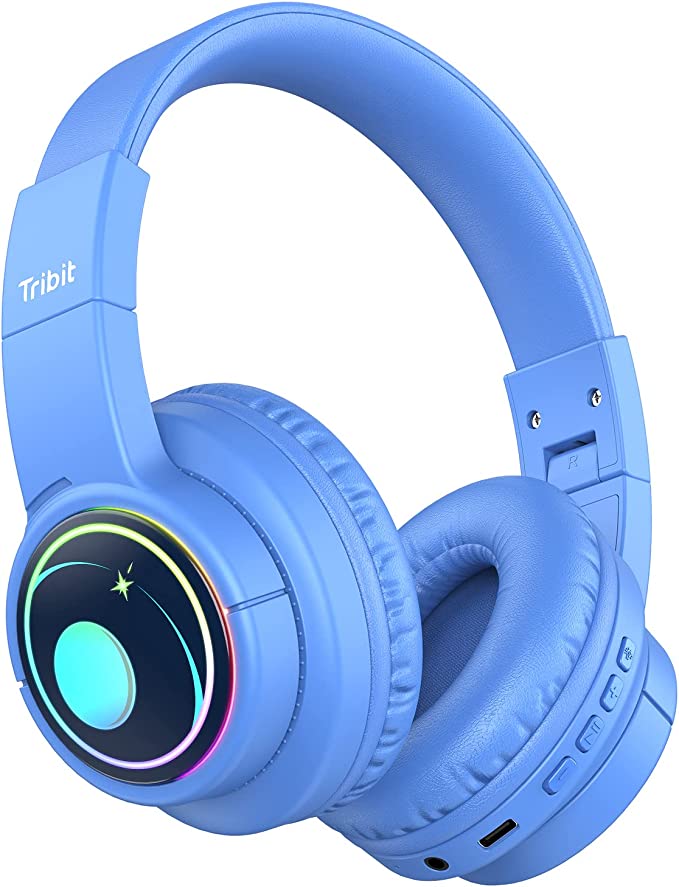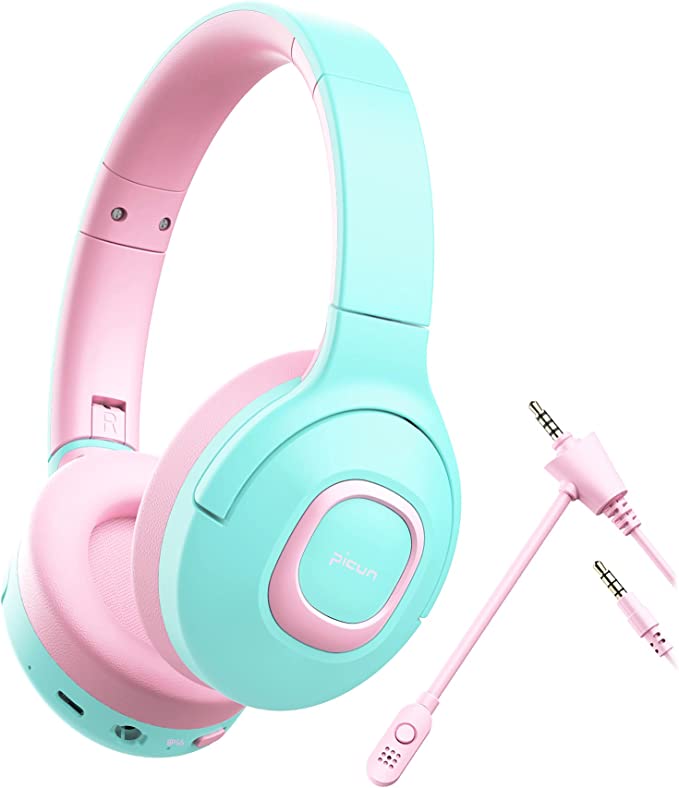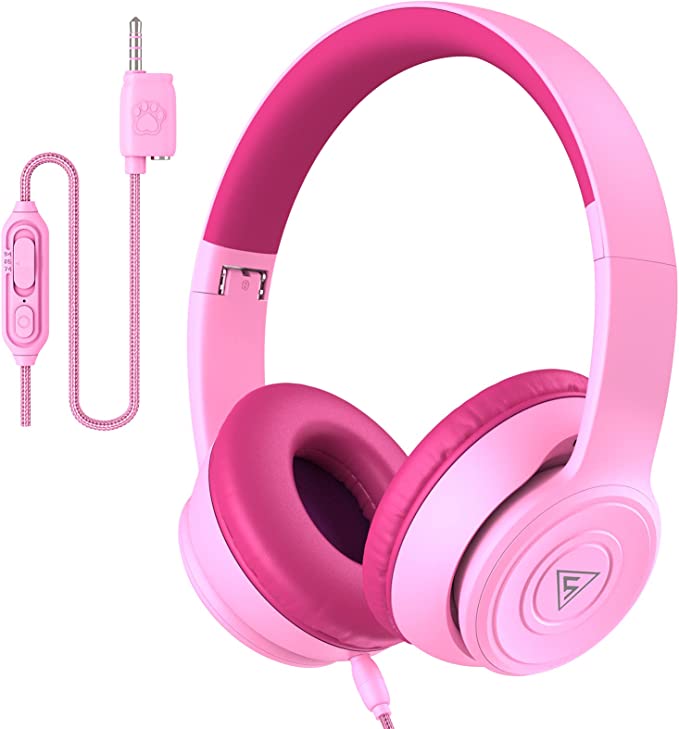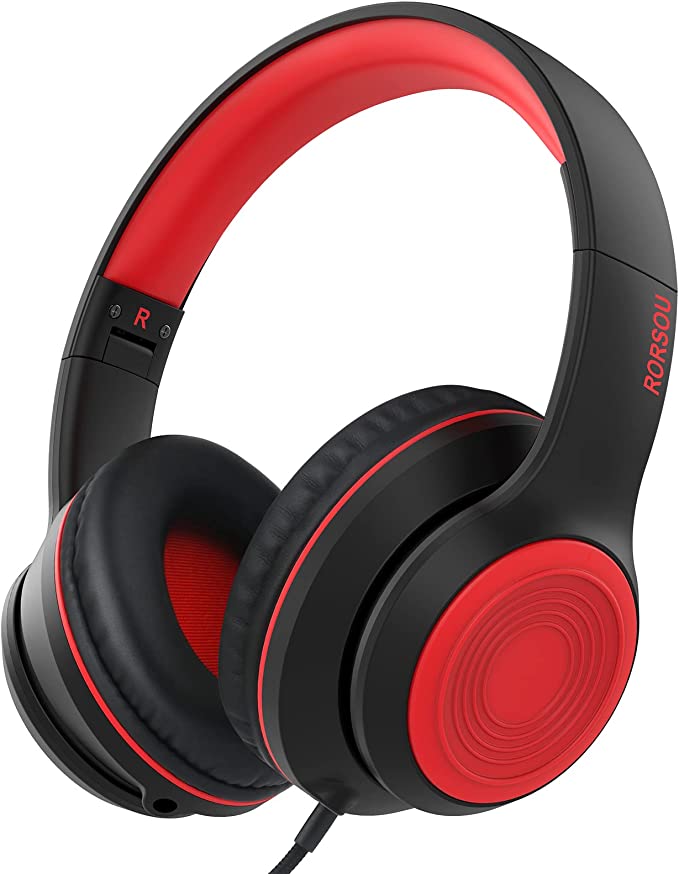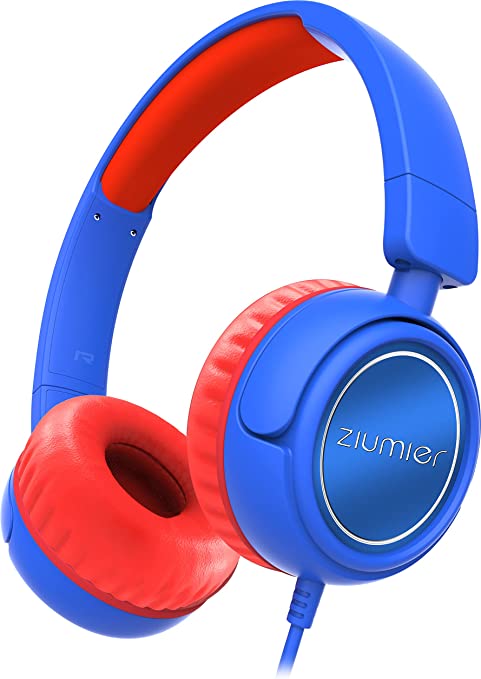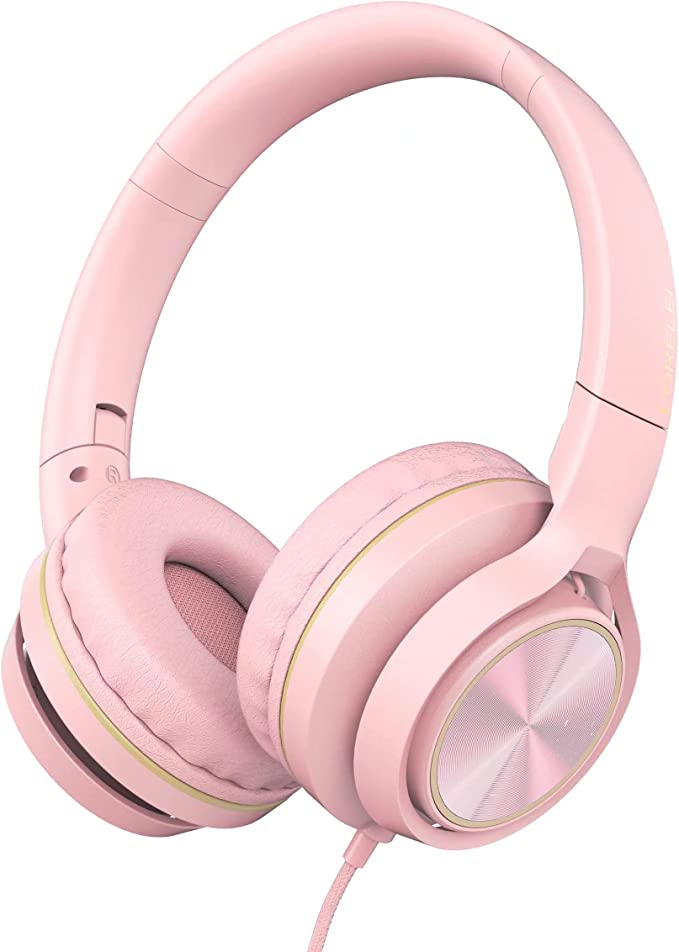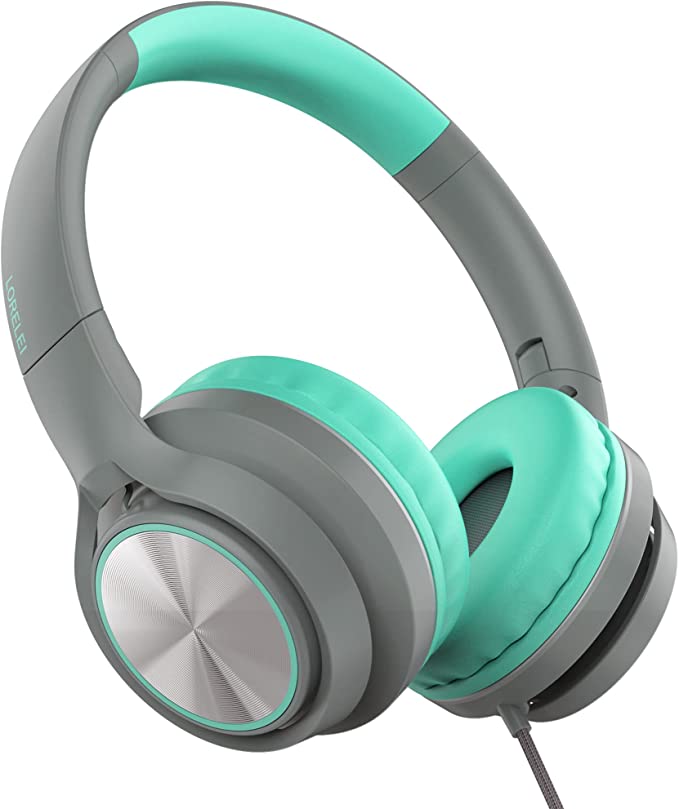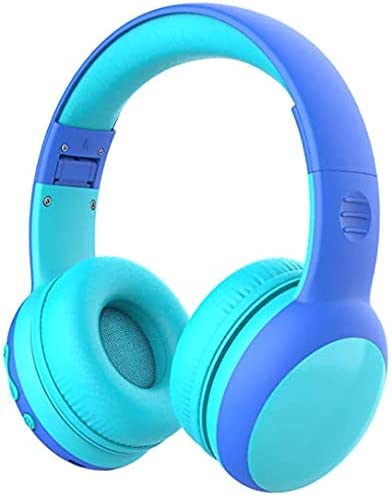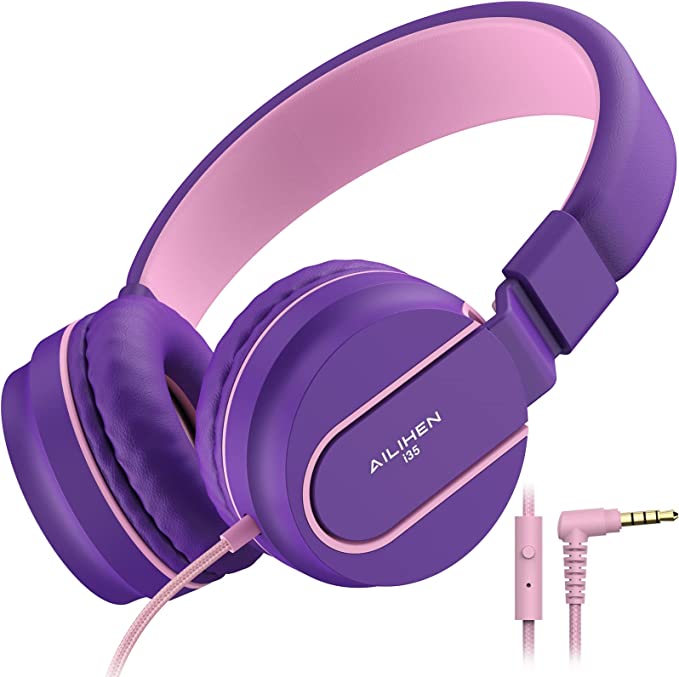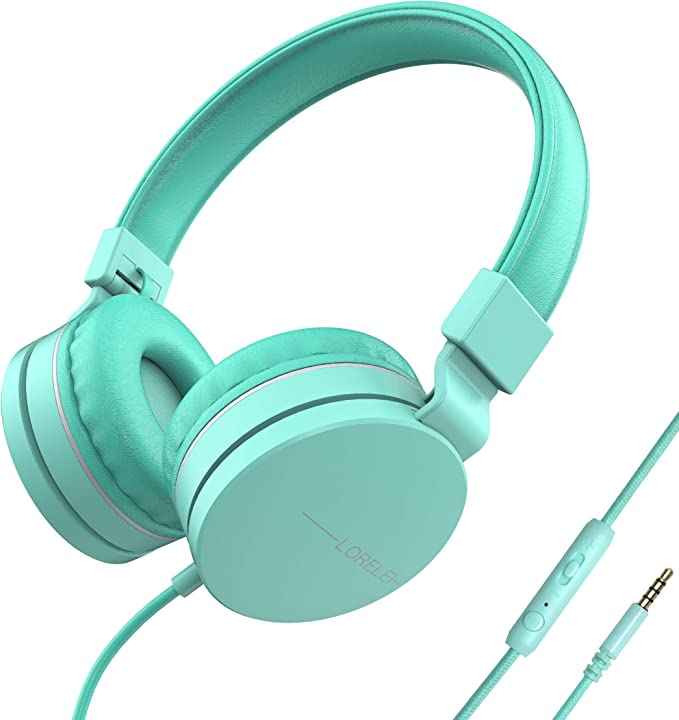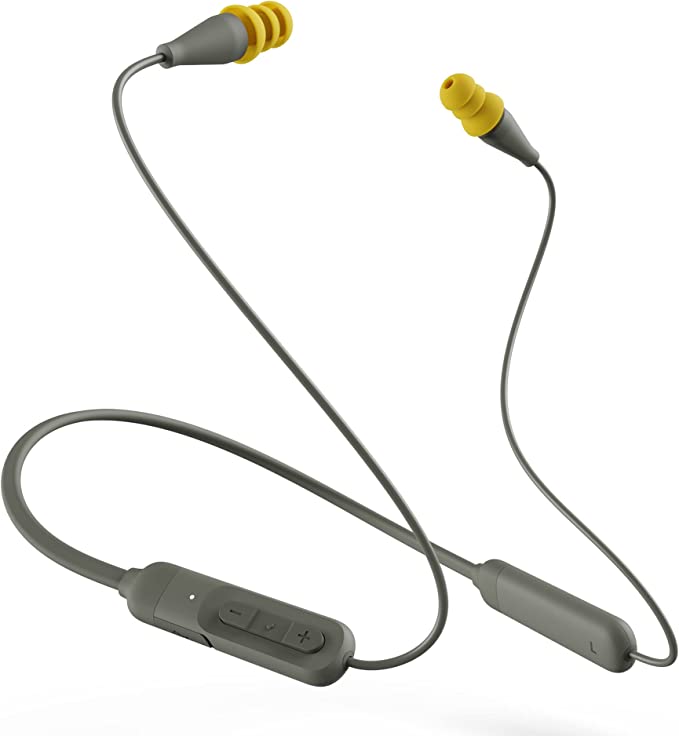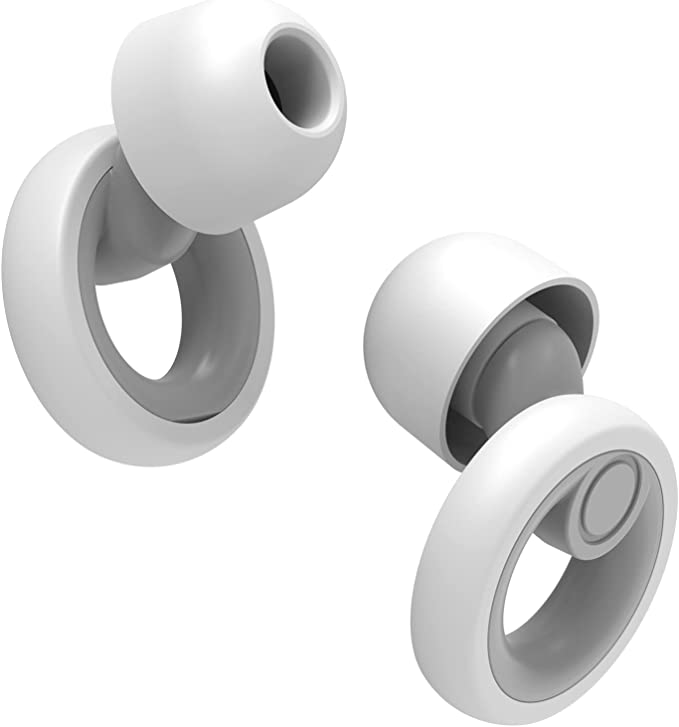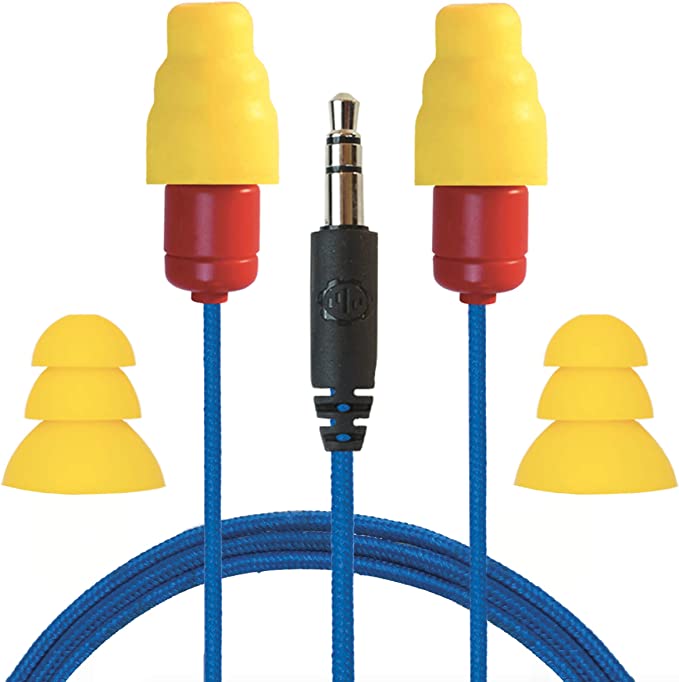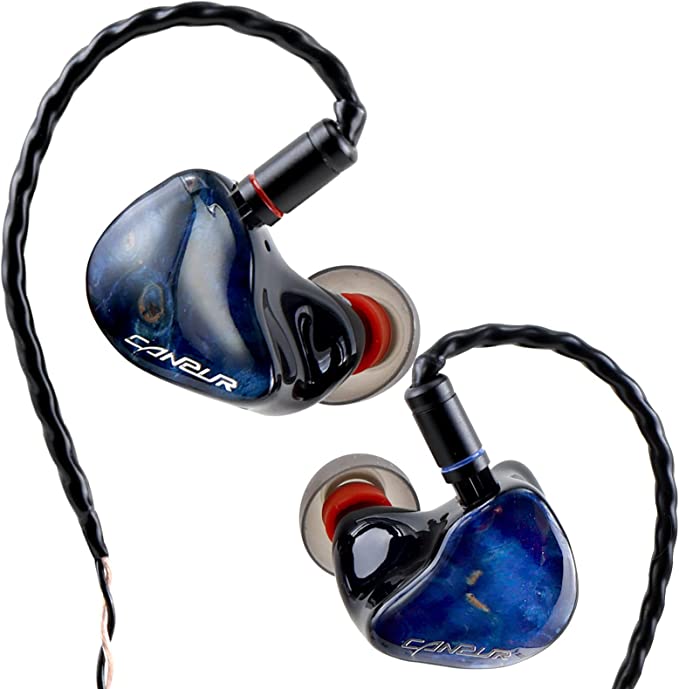RORSOU K5 Kids Headphones: A Comfortable and Durable Music Companion for Kids
Update on June 21, 2025, 1:10 p.m.
The world, for our children, is a vibrant tapestry of sounds. From the engaging narration of an e-book and the collaborative chatter of an online class to the immersive worlds of their favorite games, audio plays a pivotal role in their learning and leisure. As a parent and an audio technologist, I’ve spent years navigating the landscape of sound, both professionally and for my own children. The quest for the “perfect” kids’ headphones often feels like searching for a mythical creature: something that’s safe, engaging, comfortable, durable enough to withstand the whirlwind of childhood, and ideally, won’t break the bank. Today, we’re taking a close, science-informed look at the RORSOU K5 Kids Headphones, a product that aims to tick many of these boxes. My goal isn’t just to review a product, but to empower you with the knowledge to make informed choices for your child’s auditory well-being.

Guardians of Young Ears: Demystifying Volume Limitation
Perhaps the most critical feature to scrutinize in any headphone designed for a child is its approach to volume control. This isn’t just about preventing a startlingly loud moment; it’s about safeguarding against a silent, creeping threat known as Noise-Induced Hearing Loss, or NIHL.
The Invisible Threat: Understanding Noise-Induced Hearing Loss (NIHL) in Children
Children’s auditory systems are still developing and are, therefore, more susceptible to damage from loud sounds than adult ears. NIHL is often gradual and painless, but it’s permanent. It occurs when delicate hair cells within the inner ear are damaged or destroyed by excessive noise exposure. Think of these hair cells like the keys on a piano; once a key is broken, it can no longer produce its note.
Sound intensity is measured in decibels (dB). It’s crucial to understand that the decibel scale is logarithmic, not linear. This means a small increase in dB represents a significant jump in sound energy and potential for harm. For instance, an increase of just 3dB roughly doubles the sound power. The World Health Organization (WHO) and the American Academy of Pediatrics (AAP) consistently emphasize the importance of limiting both the volume and duration of sound exposure for children. As a general guideline, prolonged exposure to sounds above 85dB is considered risky.

The K5’s Dual Defense: 85dB for Daily Play, 94dB for Noisy Journeys
The RORSOU K5 headphones incorporate a dual volume-limiting system, a feature I always look for.
The primary setting caps the volume at 85dB. Consider this the “everyday safe harbor.” It’s designed for typical listening environments – think your child engrossed in an educational app at home, listening to an audiobook in their room, or participating in a quiet online lesson. This level aligns with widely accepted audiological recommendations for preventing hearing damage during extended listening periods. It allows for clear audio without venturing into hazardous territory.
Then there’s the 94dB option. Why offer a louder setting? This is intended for situations with high ambient noise, such as during air travel or a noisy car ride. In such environments, a lower volume limit might render the audio inaudible against the background din, defeating the purpose of the headphones. The 94dB setting aims to improve the signal-to-noise ratio – making the desired audio clearer relative to the surrounding noise. However, it’s vital to approach this higher limit with caution. While still “limited” compared to unrestricted adult headphones, 94dB carries a higher risk with prolonged exposure. Its use should be less frequent and ideally for shorter durations, always under parental awareness. The fundamental principle of hearing safety is an inverse relationship: the louder the sound, the shorter the permissible exposure time.
Conceptually, these volume limits are often achieved through passive attenuation (acoustic design that naturally limits output) or active electronic circuitry within the headphones that caps the signal sent to the drivers.

Beyond Muffled Sounds: Exploring Audio Quality and Immersion
While safety is paramount, the actual listening experience also matters. If the sound is tinny or unclear, children are less likely to engage with their audio content positively.
The Heart of the Sound: What 30mm Drivers Mean for Little Ears
At the core of any headphone are its drivers – the tiny speakers responsible for converting electrical signals into the sound waves we perceive. The RORSOU K5 headphones are equipped with 30mm audio drivers. Imagine a miniature orchestra: the driver consists of a diaphragm (a thin membrane), a voice coil (a coil of wire), and a magnet. When an audio signal (an electrical current) flows through the voice coil, it creates a fluctuating magnetic field. This field interacts with the permanent magnet, causing the voice coil and the attached diaphragm to vibrate rapidly. These vibrations create pressure waves in the air – sound!
The size of the driver (in this case, 30mm in diameter) can influence its ability to reproduce different frequencies. Larger drivers generally have an easier time moving more air, which can be beneficial for producing lower frequencies (bass). RORSOU claims these drivers deliver “rich bass and crisp midrange.” For children’s content, this translates to an ability to render voices clearly in audiobooks or educational programs, provide an engaging thump in age-appropriate music, and offer a generally balanced sound for videos and games, without necessarily aiming for the hyper-detailed audiophile experience an adult might seek.
Stereo Sound: Crafting a World of Audio Dimension
The K5s offer stereo sound. This means that distinct audio information is sent to the left and right earcups. Our brains use these subtle differences to perceive a sense of space, direction, and depth in sound. For a child, this makes listening more immersive – characters in a story might seem to move across a “stage,” or music might feel more encompassing.
Passive Noise Isolation: Finding Focus in a Busy World
These are on-ear headphones, meaning the earcups rest directly on the outer ear. This design naturally provides a degree of passive noise isolation. By creating a physical seal around (or in this case, on) the ear, they help to block out some of a child’s immediate environmental sounds. This isn’t the active noise cancellation (ANC) you find in higher-end adult headphones, which uses microphones and electronics to actively counter external noise. Instead, it’s a simpler, physical barrier. The benefit? It can help a child concentrate on their audio content in a moderately noisy room without needing to crank up the volume to potentially unsafe levels, thereby complementing the volume-limiting feature.

The Power of Two: The Ingenious Sharing Jack
One feature of the RORSOU K5 that particularly appeals to me, both as a technologist and a parent of multiple children, is the integrated 3.5mm audio sharing jack.
Simple Tech, Big Impact: How One Port Multiplies the Fun
This isn’t a complex piece of technology. Essentially, the headphones have an additional 3.5mm output port. When another pair of standard wired headphones is plugged into this port, the audio signal from the source device (tablet, phone, laptop) is passively split and sent to both sets of headphones simultaneously. It’s a straightforward parallel audio connection.
More Than Just Audio: Cultivating Connection and Collaboration
The brilliance of this feature lies not in its technical complexity, but in its social and educational utility. It elegantly solves the common “can I listen too?” dilemma.
Think about it:
1. Fostering Empathy and Cooperation: Instead of squabbling over a single device, children can easily share an experience. This simple act of plugging in another headset can be a small lesson in sharing and considering others’ desires.
2. Collaborative Learning: Two students can listen to the same instructional video or audio lesson on a shared device in a classroom or library without disturbing others.
3. Family Travel Made Easier: On long journeys, siblings can watch a movie or listen to an audiobook together from one tablet, each with their own comfortable audio experience. This reduces the need for multiple devices or cumbersome, easily lost splitter cables.
It’s a small design choice that can genuinely enhance how children interact with shared media and with each other.

Designed for a Child’s World: Comfort, Portability, and the Durability Debate
Any product intended for children must be designed with their unique physical characteristics and, let’s be honest, their often less-than-gentle handling in mind.
Gentle on Little Heads: The Ergonomics of Extended Wear
Comfort is key if headphones are to be used for more than a few minutes. The RORSOU K5 addresses this with several design elements: * Materials: The earcups are cushioned with soft foam and covered in what RORSOU describes as “breathable protein leather.” Protein leather is a type of synthetic polyurethane (PU) leather, often chosen for its softness and resemblance to real leather, while “breathable” implies it’s designed to reduce heat and moisture buildup during wear – a common complaint with on-ear and over-ear headphones. * Lightweight Design: Weighing in at a mere 6.7 ounces (about 190 grams), these headphones are relatively light. This is crucial for children, as excessive weight can lead to neck strain and discomfort over time. The absence of heavy metal components in the headband structure contributes to this. * On-Ear Fit: As on-ear headphones, they rest on the ears rather than fully enclosing them (over-ear) or inserting into the ear canal (in-ear – generally not recommended for young children). The pressure distribution of the headband and earcups is vital for comfort.
Fold and Go: The Convenience of Compact Design
The foldable design is a practical plus. The earcups can typically swivel and fold inwards, making the headphones more compact for stowing in a school backpack, a parent’s bag, or a suitcase. This enhances their portability for school, travel, or just keeping things tidy at home.
The Resilience Test: Sturdy Claims Meet Real-World Kid Use
This is often where the rubber meets the road for children’s products. RORSOU states the K5 construction is “durable and sturdy plastic,” and the cord is a “rope braided in nylon, very durable and tangle-free.”
Nylon is indeed a strong synthetic fiber known for its good tensile strength (resistance to pulling) and abrasion resistance, making it a sensible choice for a headphone cable that might be subjected to yanking, twisting, and being stuffed into bags. The braided nature can also help prevent severe tangling. The “durable plastic” claim likely refers to impact-resistant plastics like ABS or Polypropylene commonly used in consumer electronics.
However, it’s essential to temper these manufacturer claims with real-world user experiences. The provided information includes several user reviews citing breakage. For example, Coco koch mentioned they “broken badly after 3.5 month,” Maddie reported the “plastic has already broke,” and murali stated they “got wrecked in 5 weeks.” Oscar O. also noted they “Broke after a few uses, they cracked at the earcups.” This isn’t uncommon with budget-friendly children’s electronics. Children, through no malice, can be incredibly tough on their belongings. They drop things, sit on them, pull cords at awkward angles.
So, what’s the takeaway? While the K5s incorporate materials chosen for durability, the $15.99 price point likely dictates certain compromises in overall robustness compared to more expensive, ruggedized alternatives. It underscores the challenge manufacturers face in “kid-proofing” electronics affordably. As parents, it’s wise to set realistic expectations for longevity, especially with active children, and to teach them about caring for their belongings, even if those belongings are designed to be “tough.”

Wired for Reliability: The Unfading Utility of the 3.5mm Connection
In an increasingly wireless world, the RORSOU K5 sticks with a traditional wired 3.5mm connection, and for good reason when it comes to kids’ gear.
Plug, Play, Proceed: Simplicity and Universal Compatibility
The 3.5mm audio jack has been a stalwart of audio connectivity for decades. Its primary advantages for children’s headphones include:
1. Simplicity: There’s no Bluetooth pairing to fuss with, no wondering if it’s connected to the right device. Just plug it in, and it works. This is invaluable for younger children or for quick, hassle-free use in a classroom setting.
2. Universal Compatibility: The 3.5mm port is found on an enormous range of devices children use – Chromebooks, many tablets (including older iPads and Kindle Fires), laptops, portable game consoles like the Nintendo Switch (in handheld mode), MP3 players, and PCs.
3. No Batteries, No Charging: Wired headphones draw power directly from the audio source. This means no dead batteries mid-movie, no forgetting to charge them before a trip, and no added e-waste from depleted rechargeable batteries down the line.
Clear Communication: The Built-in Microphone for Learning and Connecting
The K5s feature an in-line microphone integrated into the cable. This is a crucial addition for modern use cases. It allows children to participate actively in online classes, make voice calls to family and friends, or even engage in in-game chat (where appropriate and monitored). This significantly expands the headphones’ utility beyond passive listening.
A Parent-Expert’s Perspective: Making Informed Choices for Your Child’s Audio Journey
So, after dissecting the RORSOU K5 Kids Headphones, what’s the overall picture?
These headphones clearly demonstrate a thoughtful approach to several key concerns for parents and educators. The dual volume-limiting system is a commendable nod to hearing safety, offering a practical way to manage sound exposure. The audio sharing jack is a genuinely innovative and child-friendly feature that promotes positive social interaction and utility. The design strives for comfort with lightweight materials and soft earcups, and the wired connection with an in-line microphone offers straightforward, reliable functionality for a wide range of learning and entertainment scenarios.
However, the user-reported durability concerns are a significant counterpoint that cannot be ignored. While the price is very accessible, parents should weigh this against the potential need for replacement if their child is particularly hard on their belongings. It’s a common trade-off in the budget electronics sphere: features versus long-term resilience.
Ultimately, choosing any product for your child involves balancing various factors. With the RORSOU K5, you’re getting a feature set that prioritizes key aspects of child-friendly audio. Consider your child’s specific needs: Are they generally careful with their things? Will they primarily use headphones in quiet environments, or do they need that higher volume option for travel? How important is the sharing feature for your family or classroom?
My advice, as always, extends beyond any single product. Cultivate an environment where children understand the importance of their hearing. Teach them about safe listening habits – taking breaks, not always defaulting to the maximum allowed volume, and speaking up if something feels too loud. No headphone, no matter how well-designed, can replace informed parental guidance and responsible usage. The RORSOU K5 offers a tool, and a seemingly decent one for its price point in many respects, but the wisdom to use it well lies with us and the children we guide. Investing in their long-term hearing health and fostering positive, mindful technology habits is perhaps the most valuable sound investment we can make.



